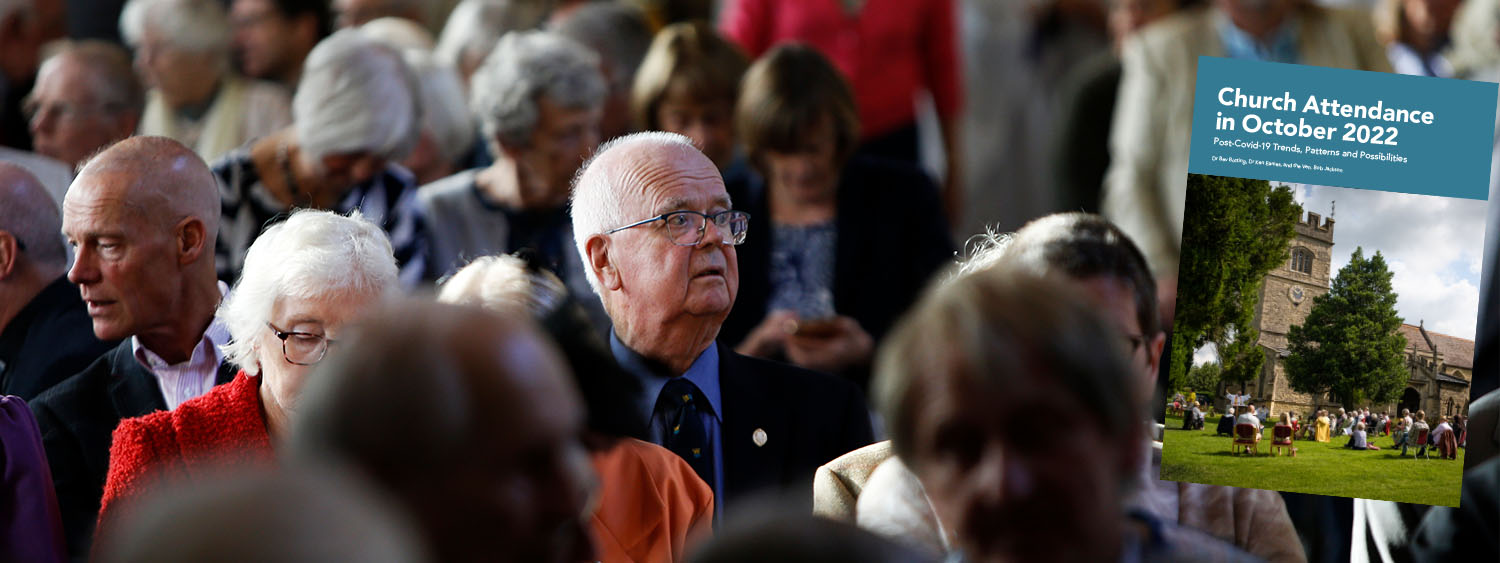
Towards the end of 2022, over one thousand churches sent in their October 2022 Statistics for Mission returns. In this landmark report, Bev Botting, Ken Eames, and Bob Jackson identify signs of hope and life for the Church following the Covid-19 pandemic.
Methodology
The report authors – Dr Bev Botting (Data Analyst, Diocese of Oxford, and freelance statistician), Dr Ken Eames (Senior Statistical Researcher, Church of England), and the Venerable Bob Jackson (Church Growth consultant) – arranged for churches in five dioceses to return their October 2022 ‘Statistics for Mission’ numbers promptly and then compared their attendance with 2019.
The sample of 1139 churches is sufficiently large and representative to give a good early idea of the national picture and some answers to four questions:
1. How far has church attendance recovered after Covid-19?
-
Average Weekly Attendance onsite in 2022 was 78% of that in 2019. This compares with 71% in 2021. Estimated attendance online added a further 11%, making the total attendance at parish churches 89% of 2019. In addition, a small number of cathedrals and other churches with a national reach now have a substantial online following.
-
2022 onsite attendance in our five dioceses varied between 73% and 81% of 2019.
-
Our view is that there is only limited scope for further ‘natural’ recovery of attendance in 2023. To get back to the 2019 level is entirely possible but it will take specific targeted actions to achieve it.
2. What are the patterns and variations in the recovery?
-
Adult attendance (79%) recovered better than child attendance (71%).
-
Traditional church (79%) recovered better than Fresh Expressions of Church (67%), but with significant variation between dioceses.
-
Attendance on weekdays in 2022 was 76% of the 2019 level, slightly lower than the 79% on Sundays.
-
There has been much greater variation in attendance at individual churches than we would normally expect in a three-year period.
-
Attendance at school services in 2022 was slightly higher than in 2019.
3. Why has a full recovery not yet happened?
-
We found that the limited supply of church services was a more important explanation than any fall in demand for them. Average attendance per service is almost back to 2019 levels but there are fewer services.
-
Online: Churches still offering ‘Church at Home’ in 2022 (almost all in the form of online services) recovered slightly better onsite than other similar churches. Adding in their estimated online attendance made their 2022 total slightly more than 2019. The fall in total attendance is restricted to those no longer online.
-
Onsite: In October 2022 on average churches offered only 83% of the 2019 number of services. Those with fewer services had recovered attendance to only 71% of 2019, those with the same number of services to 81% and those with more services to 100%.
-
Not every Sunday: Churches not offering a service every Sunday rose from 19% of all services in 2019 to 26% of our sample in October 2022. This varied by diocese; in one diocese, 40% of churches were no longer open for worship every Sunday, in another diocese 30%.
-
Larger Churches: Churches with an average weekly attendance in 2019 of over 100 had recovered only 76% of their attendance in 2022 but those with under 25 in 2019 had recovered 100%. The weakest recovery has been in churches that in 2019 had over 100 attending, including significant numbers of children and their parents.
-
Leadership challenges: We suspect that, lying behind the retrenchment we have identified, is the pressure on clergy and other leaders emerging from Covid-19 to an even more demanding situation than before. Personal exhaustion, reduced volunteer energy, the added online dimension, damaged church finances and disrupted church communities can make it hard to rebuild and develop every aspect of church life.
4. How can further attendance growth be encouraged?
-
Invite and welcome. Many congregations have seen far more turnover and losses than usual in a three-year period. Now is a good time to focus on invitation and welcome.
-
Plant new services and congregations.
-
Make church and services available every week. Attendance has been lost through reduced service numbers but can be gained through starting new services and congregations.
-
Focus on children and families. The main focus should be children, young people and families, the groups whose attendance has diminished the most through Covid-19.
- Don’t abandon online – develop it. As many churches as possible should recover to offer an onsite service each Sunday and a service online on YouTube.
The above actions are primarily for churches, aided and encouraged by dioceses. Those listed below are mainly direct actions by dioceses.
-
Address leadership capacity. Have the power to address the leadership bottleneck by broadening the model to release new people into church leadership. Solutions such as Focal Ministry are available to enable more realistic clergy job descriptions and bring new energy into leadership. Some dioceses are adopting these solutions at scale, so are accumulating valuable experience to share. All dioceses will have some informally, locally appointed Focal Ministers to learn from.
-
Organise a recovery project for larger churches. Can bring larger churches together in a process to help them find ways to grow back to size in post Covid-19 times.
-
Communicate and debate the findings in the report. All dioceses are free to circulate the report (or this summary of it) round their synods, clergy and churches for discussion and as input into parish Mission Action Plans.
Further information and support
-
Download the report (PDF)
-
You can email Bob Jackson or Bev Botting to discuss this report
-
See also: Summary of October 2022 attendance figures in the Diocese of Oxford